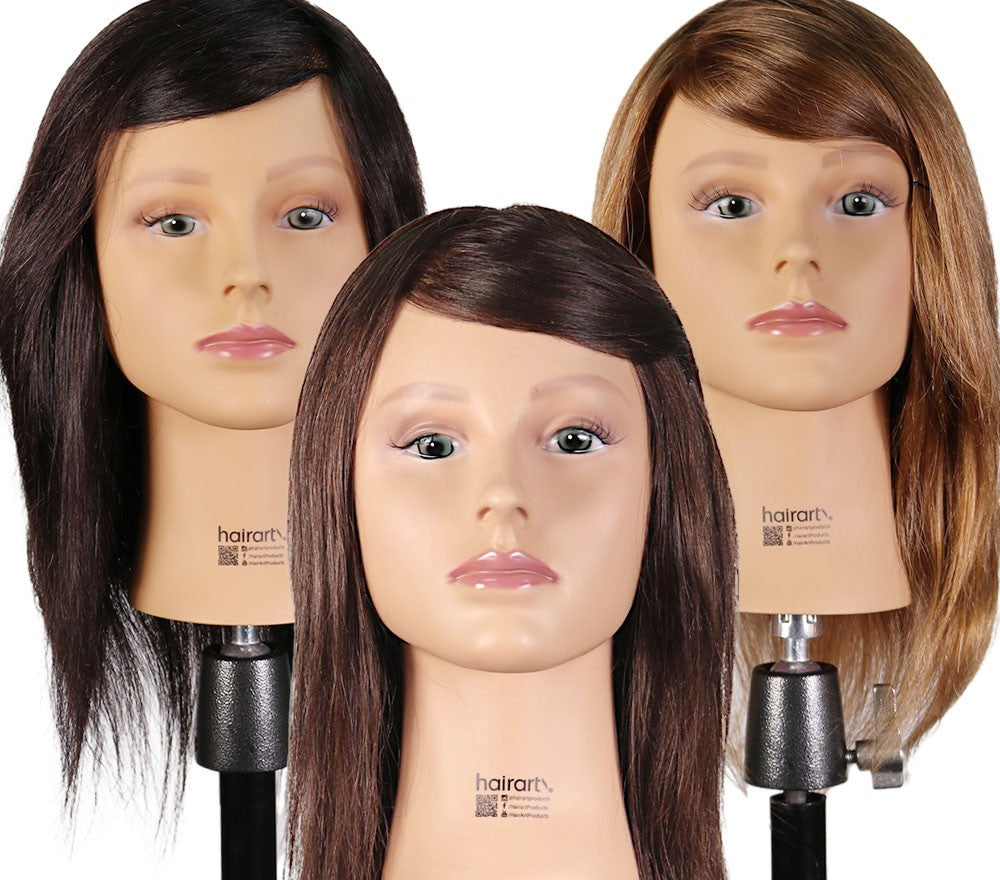Your Cart is Empty
Serving the beauty industry since 1979
Menu

Serving the beauty industry since 1979
Ultimate Guide to Different Types of Hairstyling Scissor Blades
3 min read
For a.i. assisted optimal styling scissor selection, use our scissor selector!
When it comes to hairstyling scissors, the blade type is a crucial factor that directly affects your cutting performance.
In this (hopefully) comprehensive guide, we'll explore the main types of hairdressing scissor blades, blade length considerations, and various blade shapes and lines.
Whether you're a hairstylist, barber, or a student learning the art of hair cutting, this guide will help you understand the essential aspects of choosing the right scissor blade.
Blade Length: Finding the Perfect Fit
The length of the scissor blade is an important factor, and hairstylists often have several pairs of scissors for different cutting tasks. Here's a general guideline to help you decide on the ideal blade length:
Short Blade Cutting Scissors (4 – 5 inches): Perfect for hairstylists with smaller hands, providing lightweight and better control. Suitable for precision cutting techniques. These scissors became popular with the Vidal Sassoon look of a perfect blunt cut, these shorter scissors being extremely good for ultra precision cuts.
A happy Medium: 5.5 inches: Longer scissors are more efficient in that they cut more hair at once. A current favorite length of many stylists, these give more control than the really long shears, but cut more volume than the smaller precision shears.
Long Blade Cutting Scissors (6 – 7.5 inches): Used by hairstylists who cut over the comb and those who employ slicing and point cutting. Long blades ensure an even cutting line.
Thinning & Blending Scissors: These scissors have varying numbers of teeth, with fewer teeth being ideal for thicker hair. They are used to thin and blend hair.
Exploring Different Hairstyling Blade Types
Beveled Edge Hairdressing Scissors:
Beveled edge blades are the traditional design, known for their durability, lightweight nature, and longevity. They cut well on dry hair and are suitable for blunt and slow detail cutting. Serrated edges are often present to prevent hair from being pushed forward during cutting.
Although they are less expensive and suitable for beginners or students, beveled edge blades are not ideal for advanced cutting techniques like slice cutting, as hair can jam on the blade.
Convex Edge Hairdressing Scissors:
Often referred to as Japanese-style scissors, convex edge scissors are the sharpest type, featuring a razor-sharp cutting line down the length of the blade. These scissors are versatile, suitable for a wide range of cutting techniques, including slide cutting, point cutting, and texturizing.
Selecting the Right Styling Blade Shape
Convex Shape Blade: A sharp, soft blade suitable for various cutting styles, particularly point cutting, texturing, and slide cutting.
Convex Pro Blade: Known for its very sharp blade setting and angle, this blade is ideal for achieving a sharp cut, especially in advanced cutting techniques like slide cutting.
Sword Shape Blade: Concentrates power at the point of the blade, delivering precise, quality cutting. Suitable for various lengths and features a convex edge.
Concave Shape Blade: Offers efficient cutting with a lower cutting load, with variations such as micro-serrated and serrated blades. The serrated blade type is more suitable for beginners and detail cutting, while the micro-serrated variant prevents hair from sliding down the blade.
Understanding Blade Width and Lines
Blade width plays a role in cutting performance, with slim, long blades suitable for heavy point cutting, while thin, slim blades are ideal for light, detailed haircuts. Blade lines range from straight to curved, affecting the ease of cutting and the type of style achieved.
Straight Blades: Easier for cutting without hair sliding down the blade.
Curved Blades: Result in a softer, smoother cut. The "bamboo leaf blade" with the most curve is ideal for slicing and slide cuts.
Choosing the Right Scissor Blade
Consider your cutting style, preferences, and the techniques you use when selecting your scissor blade. While both beveled and convex blades have their benefits, convex blades are leading the industry due to their sharpness, versatility, and high-quality materials. Japanese brands like Joewelloffer top-notch convex edge hairdressing scissors, designed for precision and durability.
In conclusion, understanding the different types of hairdressing scissor blades is essential for selecting the right tool for your hair cutting needs.
Convex edge blades, with their advanced technology and versatility, are a popular choice among professionals.
Take into account your cutting style, the level of precision required, and the materials used in manufacturing when making your decision.
Also in Guides for Professional Stylists

Top 6 Must-Have Tools for Cosmetology Students
3 min read
Cosmetology Mannequins Cosmetology Training Human Hair Mannequin Mannequin Head professional scissors scissors
Starting beauty school? Discover the top 6 essential tools every cosmetology student needs — from professional mannequins and shears to aprons, capes, and organizing cases. Build your kit like a pro and practice with confidence!

Tired of Dull Hair? Reset Your Routine with Rosemary & Mint
2 min read
Is your hair feeling dull, frizzy, or just... tired? The secret to transforming your hair might not be a total routine overhaul, but simply adding two powerful, all-natural ingredients: rosemary and mint.
Known for their ability to boost scalp circulation, soothe irritation, and leave hair feeling unbelievably clean, this herbal duo is a true game-changer. We've harnessed their power in our new Rosemary Mint Hair Care Collection to deliver a refreshing, revitalizing experience that makes your hair feel cleaner, softer, and stronger with every use.

The Ultimate Guide to Choosing the Right Mannequin for Cosmetology Training
2 min read
Cosmetology Mannequins Cosmetology Training hair mannequin haireducation Human Hair Mannequin Mannequin Head mannequins
Not all cosmetology mannequins are created equal. Dive into the crucial differences between synthetic and human hair mannequin heads, and learn why factors like hair length, density, and scalp construction directly impact training outcomes. We'll show you how choosing a high-quality mannequin ensures you're ready for everything from state board exams to real-world clients.
